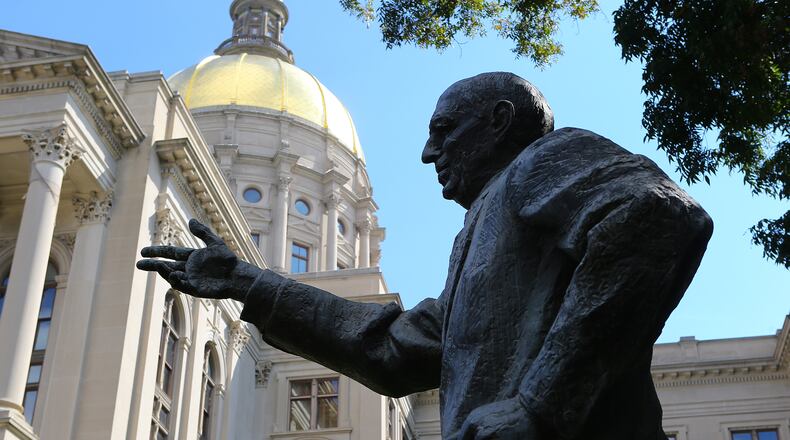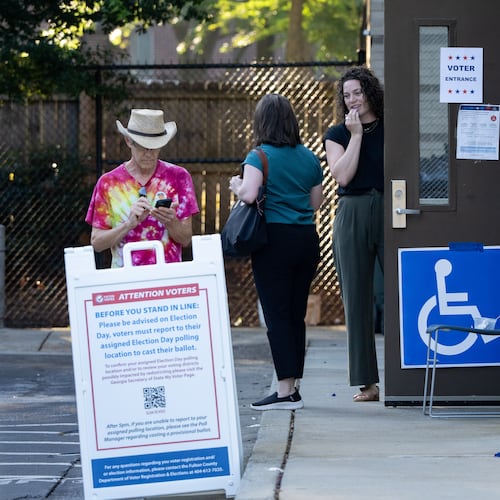This week’s effort by Democrats to change U.S. Senate rules on the filibuster is just the latest chapter in an extended parliamentary wrestling match that began in earnest in the late 1800′s, spanned the Civil Rights Era, and continues to this day.
“This is a moral moment in America,” said U.S. Sen. Raphael Warnock, who joined most Democrats in calling for limits on the filibuster in order to pass a voting rights and election bill backed by President Joe Biden.
Most people don’t realize that filibusters were not part of the original Senate rules in 1789. The first filibuster took place in 1837, evolving into a weapon against everything from internal rules changes to major legislation.
Since World War II, Democrats have been of two minds about the filibuster. Northern liberals argued for limits, pointing to repeated filibusters against civil rights legislation.
Southern Democrats, led by Georgia U.S. Sen. Richard Russell, defended the parliamentary tool; Russell was known as ‘the filibuster’s best friend’ during the 1950′s and 60′s.
Over the years, Russell fought off a variety of efforts to change the rules, asserting that the Senate was never designed to have a simple majority vote to end debate.
This week, U.S. Sen. Joe Manchin, D-W.V. echoed Russell’s exact argument.
“There’s never been a simple majority vote to basically get off of a debate,” Manchin told reporters, though it should be noted that some historians — and Senators — don’t agree on that point.
Since Russell’s death in 1971, the Senate has chiseled away at the filibuster, first reducing the supermajority needed to end debate from 67 to 60 votes. Senators also allowed some major budget plans — such as the Trump tax cuts — to avoid the filibuster.
In the last decade, both parties used the ‘nuclear option’ to get rid of the 60-vote threshold on all Presidential nominees — turning it into majority rule.
But the filibuster still reigns supreme over legislation.
“It is now commonly said that it takes 60 votes to pass anything in the Senate. This is new and obstructionist,” former U.S. Sen. Sam Nunn of Georgia wrote in a February 2020 open letter from 70 former Senators, in which they urged more bipartisan cooperation.
For years, veteran Democrats like Nunn sidestepped filibuster changes, partly in deference to the Senate’s history, in which legislative delay is seen as a feature, not a bug.
But now, one could envision a call to eliminate the filibuster becoming a litmus test for Democratic candidates of the future.
Someday, the filibuster may go the way of the telegraph office, which let reporters file their stories from the U.S. Capitol.
But the Senate isn’t quite there yet.
Jamie Dupree has covered national politics and the Congress from Washington, D.C. since the Reagan administration. His column appears weekly in The Atlanta Journal-Constitution. For more, check out his Capitol Hill newsletter at http://jamiedupree.substack.com
About the Author
Keep Reading
The Latest
Featured




